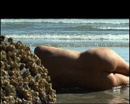DanceSpeak
Mary Hopewell Theatre, Dunedin
02/04/2008 - 03/04/2008
Production Details
DanceSpeak is a series of short succinct choreographies that are designed around themes of inter-connection between dance and the written word. In essence they are performance talks or talking performances by some of New Zealand’s top dance practitioners including: Felicity Molloy, Lynne Pringle, Christian Larsen & Ellen Jenkins.
April 2 3
Venue: Mary Hopewell Theatre
Time: 7pm (Duration 65mins)
Prices: Full $13 Concession $8 Group (15+) $10
Tickets: Door Sales Only
1 hr 5 mins, no interval
Text adds to dance textures
Review by Barbara Snook 04th Apr 2008
Dunedin’s Mary Hopewell Theatre was the venue for six short dance works presented separately, but in relation to each other. The connection for each of the works was the spoken word generally used as text within each piece.
The first work was a short film titled Anima directed by Ali East and danced by Lyne Pringle. This dance contained no words at all but was conceived within a flood of words according to the spoken introduction to the film. Words were not required for this was a beautiful and haunting film where the movement of the body was completely at one with the movement of nature; the human body merging with the sea, the sand and the rocks. The shapes created by the moving body focussed on the body particular, but was not separate from the other elements of nature. Susan Frykberg’s soundscape and John Irwin’s camera edited ensured that the work flowed seamlessly.
Skin Window by Val Smith experimented with different dynamic qualities as a dancer moved across the stage to a soundtrack of conversations. At first the focus was on the dancer as the conversation was soft and the audience anticipated what might follow but were generally left waiting for development of the piece as the choreographic style presented more of the same angular movement. As the conversation grew louder the audience was drawn in to listen The skin is a window, letting in, letting through, the touch of the world. During the dominant discussions the movement became more literal as it connected with a frame of reference.
Finding Lili: Away with the Faeries, was choreographed by Lyne Pringle and danced by Kilda Northcott and Lyne Pringle. This was a delightful romp through waves of nostalgia for those in the audience old enough to remember Lily Stevens who ignited the creative potential of many Dunedin dancers. The program notes state that: This is a teaser for Bipeds Production’s new work that will preview at the Otago Festival in October 2008, and tease the audience it certainly did. This is a cleverly devised work, presented with a natural sense of comic timing by the two mature dancers. The dance began with Pringle speaking informally to the audience and technicians. Much of the work viewed in this teaser was spoken, as narration, in role or recorded interviews. The two women danced in role as Lily working with a student and later in the piece they successfully capture the growing confusion in Lily’s mind during her dark periods of instability. Finding Lili is not to be missed during the Otago Festival.
Like Clouds or Mammals by Elle Louis August and Joshua Rutter contained some simple yet interesting directional changes. The two dancers appeared to bounce ideas off each other as they experimented with different dynamic qualities. The abstract piece demonstrated a playfulness with time energy and shapes. Both dancers moved with considerable fluidity.
The Self Explanatory Human by Kristian Larsen was an improvised work playing with what was offered in the way of light, sound and audience. The body has its own intelligence and Larsen was allowing his body to do all the talking. A John Cage discussion on a sound track reinforced the way in which he was working. However, the improvisation appeared to be more about Larsen’s own body’s intelligence and personal style than responding to outside influences. It wasn’t until the music started that the movement blended with the stimulus. It would be interesting to see this improvisation developed and consciously manipulated to take it to another level.
Inventory began with Felicity Molloy dressed very conservatively in the spotlight reading an academic paper. Images of the human skeleton were projected onto the backdrop. Slowly and cleverly Molloy began to strip away the costuming effects and moved in to some beautifully controlled and sustained movement. The images reflected the movements of dance showing bones muscles and organs of the body. Image and dance were balanced to compliment each other. A quotation by Marianne Moore used in the work summed up the dance’s beauty and success. Not in silence but restraint. The keys to our identity are disclosed in some of the ways in which they are withheld.
Copyright © in the review belongs to the reviewer





Comments